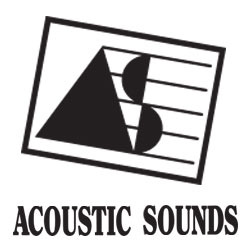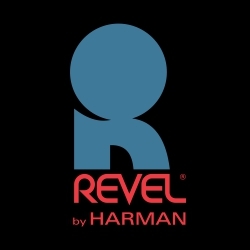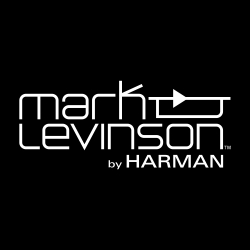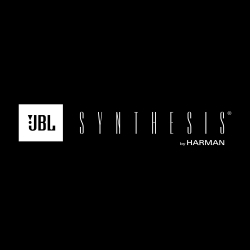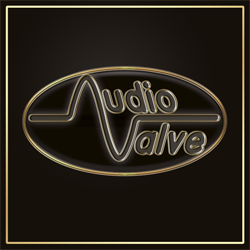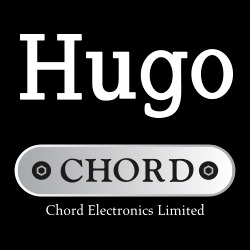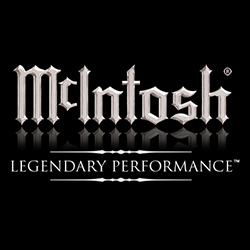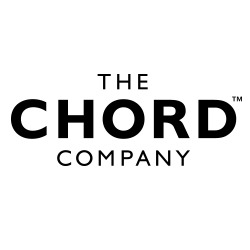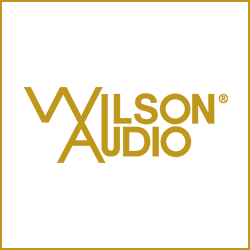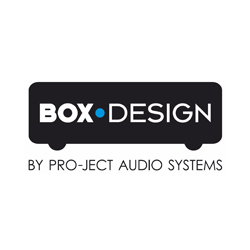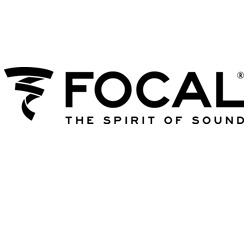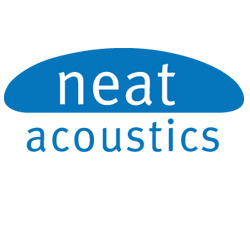There’s nothing an editor likes more than a hook on which to hang an article. Adding timeliness to what would be Just Another Review is the announcement of two crucial events in Quad’s history. The first is that the company has (again) a new owner, but all are hoping that Pointfield Ltd will treat the brand with more respect than the previous owner. The second? A new US distributor has been found, one which already has experience importing Quad’s sister brand, Wharfedale.
Because I’m on the right-hand side of the Pond, I’m writing this before the formal announcement of the above at the Winter CES. Indeed, the Quad 77-10L has been around for a year or so and has already developed a cult following in its homeland, despite it being a dynamic speaker. If anything, it has transcended the stigma attached to any speaker wearing a Quad badge which isn’t an electrostatic. Confession time: I was one of those who brayed loudly when this speaker first appeared in a different guise (grey cabinet, wine-coloured grill), produced before Quad was sold for the first time. Like other die-hards, I found the thought of a non-electrostatic Quad to be heretical, and it’s only Klipsch’s prior use which keeps the name “Heresy” from replacing the gobbledegook of “77-10L”. Name aside, it’s a good enough product to have survived the second change in ownership, but it has a tough job to accomplish. After all, the world isn’t short of quality two-way mini-monitors with a $1500-per-pair sticker price.
But Quad is so British that it hurts, and two-way mini-monitors are a British specialty, so maybe the challenge won’t be so great. It’s as if there’s something in the water, and the British just pump out classy little speakers instinctively, like the French producing croissants with their eyes closed. And Quad, which has never been less than iconoclastic when it comes to styling, even made the 77-10L interesting-looking, if not quite as esoteric as the Italians might have done it. You need look no further than the choice of a very orange-y grade of yew for its real-wood veneer. This speaker is instantly identifiable, even if you see it surrounded by dozens of other models in a filled-to-the-rafters shop. The orange is almost as arresting as the Day-Glo favoured by deer-hunters who don’t want to be taken out by one of their own party.
Even the grille is that little bit different. Instead of being perfectly rectangular, it comes to a slight point at the bottom, where the Quad badge resides. If you choose to run these without grilles, in which case they’ll sound a tad more transparent as well as a touch brighter, you’ll find that Quad has positioned a second badge on the baffle. Call it lingering pride, whatever subsequent owners did after the retirement of Peter Walker.
The colour, the yew’s strong grain patterns and the well-made grille combine to bestow elegance on what would otherwise be a mere box. Fortunately, it’s tiny and therefore jewel-like as well, so the company didn’t have to opt for styling which down-plays the dimensions. The 77-10L measures a manageable 13x9x7.5in (HxDxW) including a slightly recessed, black-finished MDF sub-base, and it begs for a 24in stand of the substantial variety; each weighs 15lb, so don’t scrimp on the pedestals.
Unlike the Quad of yore, the company which produced this speaker is decidedly close-lipped about details. It’s a bit like Rolls-Royce insulting the intelligence of its customers who have every right to know the specific output of the engine, but are told only that the power is “adequate”. Whatever the truth, the 1in soft-dome tweeter looks like a Vifa, the 5in woofer possibly a SEAS. The crossover point is a secret, but the company does specify a “frequency range” of 50Hz-20kHz, which seems optimistic; confusion follows with the additional specification of “frequency response”, stated as 70Hz-18kHz, +/-3dB. What none can fail to notice is a seriously low sensitivity of 84dB for 2.83V at 1 meter. Mention that to any single-ended triode fanatic and you’ll see the manifestations of a sort of pain most often associated with someone who has to pee desperately but can’t find a toilet anywhere.
As the other crucial specification happens to be an impedance of 8 ohms, the 77-10L isn’t exactly the kind of speaker which will make your amplifier curl up and die. Designed to work with the amplifiers in the 77 Series, including an integrated amp delivering a mere 85W/ch, neither should the 77-10L be regarded as so hungry that you’re forced to consider an amplifier above its class. I don’t know what the politically correct deem to be a suitable budget for an amplifier to match with a $1500 speaker, but I’d find it a bit curious if someone set up the Quads in a system with less than $1000 allocated for the purpose. Conversely, the Quad is good enough to do justice to amplifiers selling for $3000 or more, so put these on your short list if you’re in the running for a small speaker but have no desire to save on amplification.
Given that the 77-10L appreciates extra power, and that I’ve been living with them for a year, I’ve attached them to amplifiers ranging from the 15W tube Quad II reissues, the Sutherland 2000s, Nightingale’s gorgeous 35W/ch all-tube integrated, the Roksan Caspian, the Beard 30-60, the Krell KAV300i integrated, the Unison Research Simply 845 single-ended triode [note: this amp has thrice the grunt of yer basic 300B-equipped marshmallow], the GRAAFiti 50/50, and nearly every other amp I’ve seen this year. Whatever the specs tell you, the Quads work well with most decent 50W-plus solid-state amps, 845- or 211-equipped single-ended triodes, or push-pull tube amps rated at 30W/ch or more. If anything, the Quad prefers tubes, which take a chill out of the midband, and my favourite matches included the aforementioned Nightingale and a pair of elderly 25W Radford monoblocks. They’ll provide much joy if connected to the tail-end of Audio Research’s latter-day classic, the sorely underrated and overlooked VT60. (This just may be the best kept secret in American hi-fi…)
Over the course of a year, the Quads didn’t merely wheedle their way into my affections. I found myself using them more and more for reference purposes. It’s easy enough to locate a competent two-way at any price point; and there’s never been a shortage of mid-priced speakers with terrific performance. But, inevitably, one or two major flaws counterbalance areas of excellence, and the trick is to find a speaker that’s good in all areas rather than great in one or two, awful with one or two, and average with the rest. The reason why I kept returning to the 77-10L is its unbelievable consistency, its even-handedness, and freedom from most of the constraints associated with small boxes. But let’s get its only severe weakness out of the way, so we can focus on the good stuff.
Read no further if you are a bass junkie. Nothing in my well-worn thesaurus will serve as a euphemism to cloud the reality: the Quad 77-10L will not flatter the bottom octaves. If you live on a diet of reggae, if your most rewarding moment was discovering just how much bass can be found on MoFi’s recent Steppenwolf reissue, if you think anything smaller than a kettledrum is for wussies, if you became a truck driver just so you could bash your kidneys daily with low frequency resonances, the Quad will not ring your bells. What bass it does present for your delectation will be delightful indeed. But note that the middle syllable of “delightful” is “light”. You will hear superb control, you will even feel transients which stop like cross-drilled brakes, You will not worry your little head about rhythmic concerns. And you will hear a foundation underlying the midband instruments. But you will not have to call a plasterer to repair new cracks in the walls.
Given that I really couldn’t care less about deep bass and wouldn’t dream of sullying the Quads with a subwoofer, I can only say that the lack of truly deep bass did not undermine the gloriously open and controlled midband, nor the clean and smooth top end. There was just enough weight, enough mass to let you forget about such limitations, provided you weren’t playing the masochist by feeding it some bass-rich ballbuster which you’d heard the day before through a pair of Wilson SLAMMs. What the Quad provides above 85Hz or so is something to behold.
If your experience of older British designs includes those inspired by the BBC rather than the Flat Earth movement of the 1970s, then you know just what can be accomplished by a speaker conceived for an audience attuned to the value of midband worthiness. Any intelligent designer will tell you that the bulk of the action is in the middle, and that top-end extension or bass from hell are almost secondary. If a system can do justice to piano, to voices, to strings, then the loss of the very lowest registers is a tiny price to pay.
Maybe I’m describing too narrow a brief. Confession No 2: I listen almost exclusively to vocals and insist on using glorious stereo recordings from the 1950s, preferably vintage Capitol, soul from the 1960s, and blues of all sorts for determining a system’s way with emotion. And these are midband concerns as well as midband specialities. The Quads take voices and caress them, frame them, present them in the best possible light. Nuances of the most subtle variety come through clearly rather than loudly. The sound of a throat and a chest, the textures created by too many cigarettes or too much drink, the proper amount of sibilance – whatever it takes to make a voice sound real and in the room, the Quads have it.
As you’d expect, the Quad – like so many other mini monitors – creates a convincing soundstage if you can find the perfect positioning. A bit of toe-in will do it, not enough to have them cross in front of you but set up so that the speakers are aimed at your shoulders. The best test? Massed vocals behind a soloist, or the line-up favoured by the Persuasions, or any well-recorded live disc with an enthusiastic audience. Hit the mark, and the sound spreads beyond the speakers, around them, making them disappear. But it’s not just an amorphous wash: specific images are located with enough precision to tax a tape measure.
Although you never forget that you’re listening to a speaker smaller than a microwave oven, although the odd piece of music might remind you that the woofer is the size of a bagel, you will never leave a session with the Quads feeling cheated. They do the now-mandatory vanishing trick, they exhibit levels of transparency good enough to reveal differences in nearly-identical speaker cables, they possess enough precision to respond to all manner of tweaks. And yet they sound great straight out of the box, provided you don’t scrimp on the stands.
Probably the most illuminating thing I can say about them is that I stopped worrying about the Quad badge appearing on a non-electrostatic.
FI MAGAZINE REVIEW STATISTICS/AMPLIFIERS
Manufacturer: Quad
Street Address: IAG House. Sovereign House, Ermine, Business Park
City, State, Zip: Huntingdon, Cambs PE18 6WA
Country: UK
Phone: +44 1480 433777
FAX: +44 1480 431767
Price: $1500
SPECIFICATIONS:
Dimensions (inches): 13×7.5x9in H x W x D
Weight: 15lb each
Drivers: 1in dome tweeter, 5in woofer
Sensitivity: 84dB/2.83V/1m
Fi Nuts’N’Bolts: Quad 77-10L Loudspeaker
Unit Type: Two-way sealed-enclosure loudspeaker
Features: Bi-wirable
Inputs: Gold-plated multi-way binding posts, with solid rod links for single wiring
Overall convenience of use: Utterly conventional set-up requirements, but benefit from ultra-rigid stands
Build quality: Outstanding
Compatibility: Low sensitivity coupled to a sensible impedance make them a hungry load but not a difficult one
Incompatibility: Forget most single-ended triode amps
Fidelity In A Nutshell: Quad 77-10L Loudspeaker
Frequency Response: Good by mini-monitor standards, exceptional bass quality rather than quantity
Timbre: Very Good
Large-Scale Dynamics: Better than you’d expect given the sensitivity and size
Small-Scale Dynamics: Excellent
Tempo: Very Good
Clarity: Excellent
Imaging: Superb
Soundstaging: Small but perfectly formed
Overall: Excellent
Value-For-Dollar: Hey, it’s an import
What Else Should I Listen To?: Rogers LS3/5A, Sonus Faber Concertino, Opera Duetto, ATC A7, or – if money is an issue – Ruark Epilogues.
Musical Fare: Headbangers need not apply, unless they’re weird enough to insist on subtlety. Favours vocals, acoustic instruments, and has a notable affinity for CBS-era Miles Davis
(Fi Magazine, 1998)

